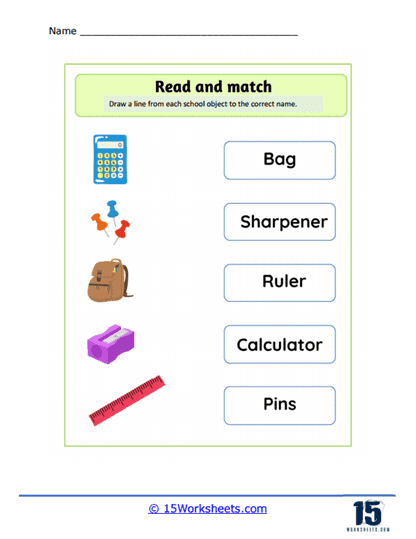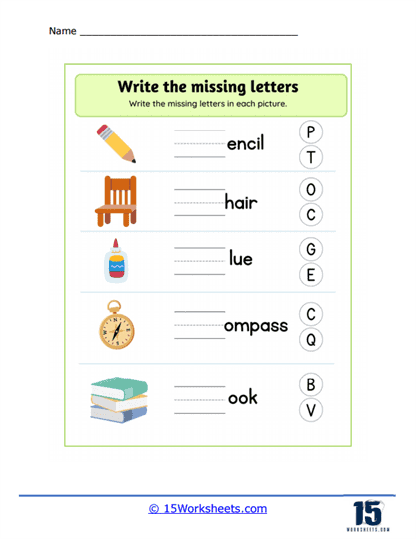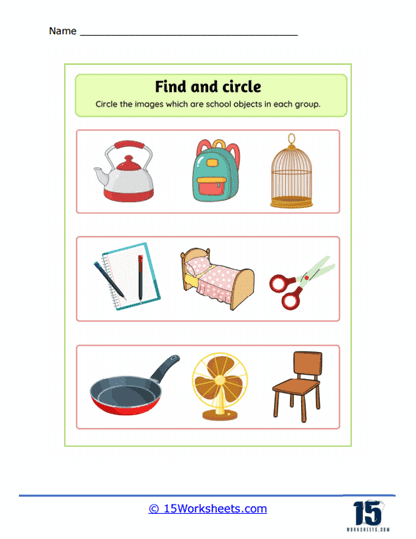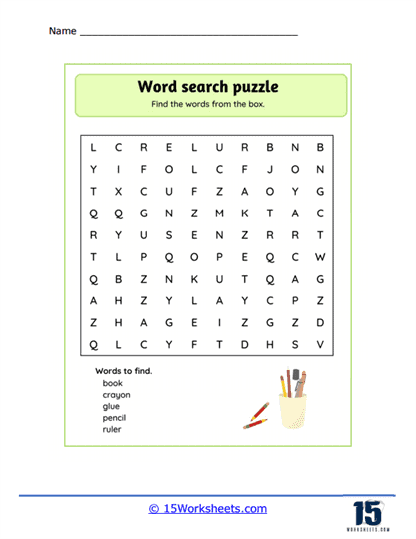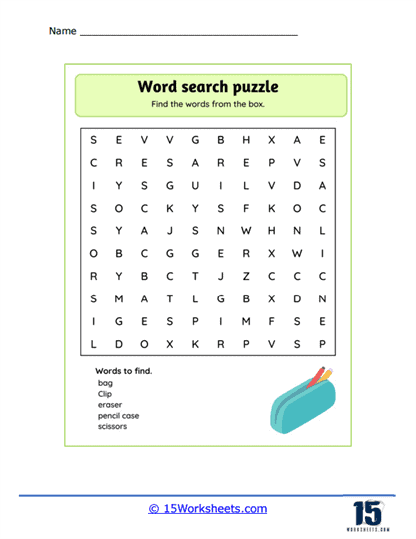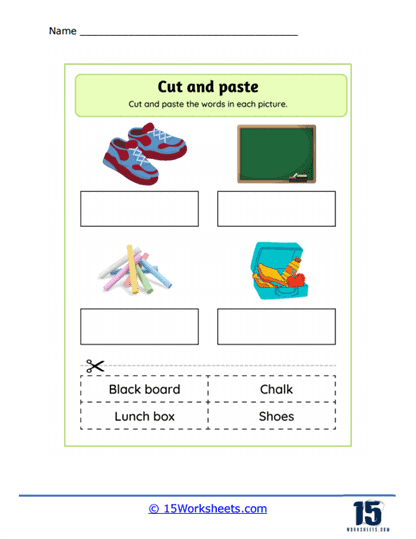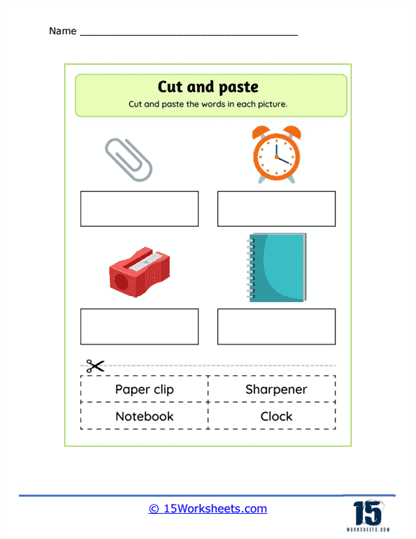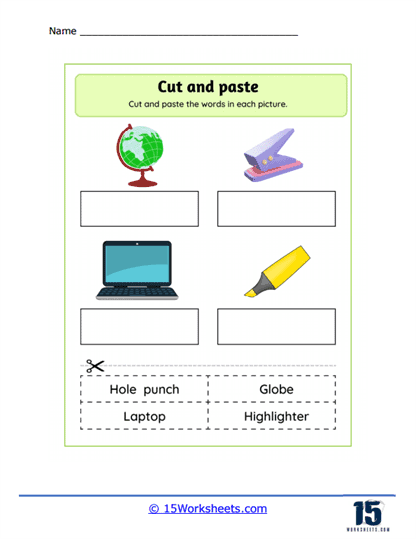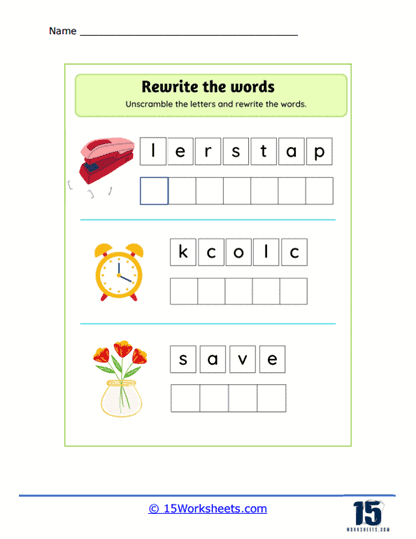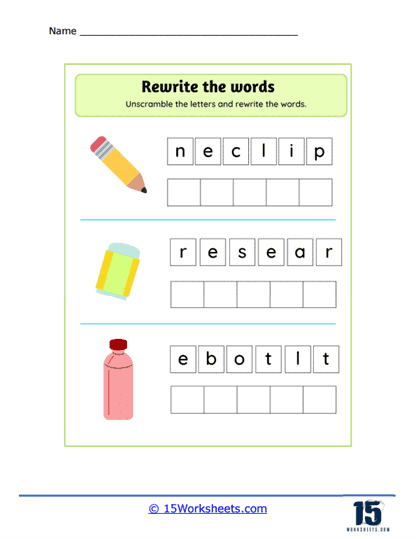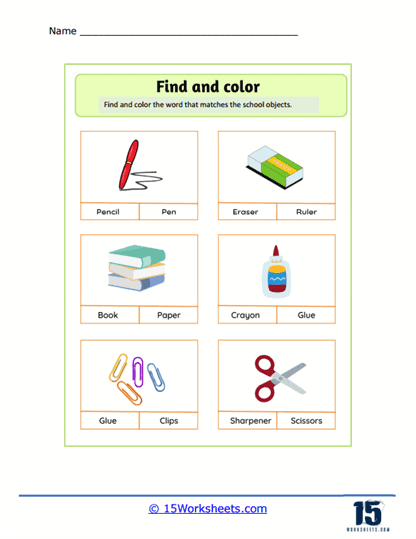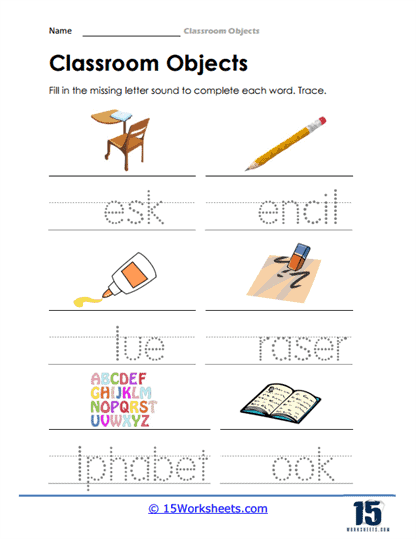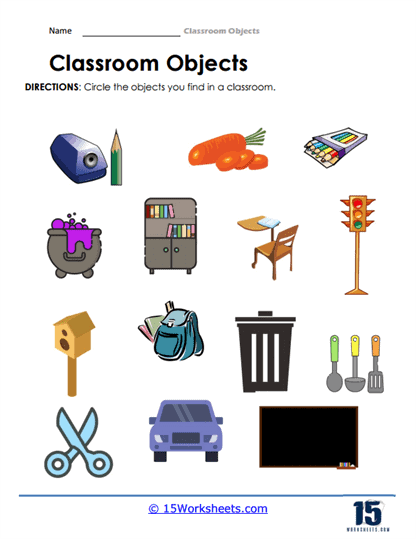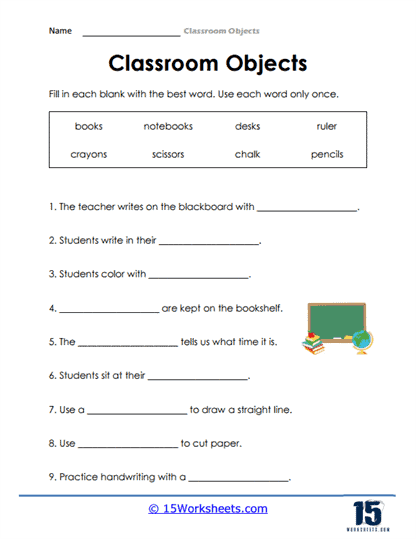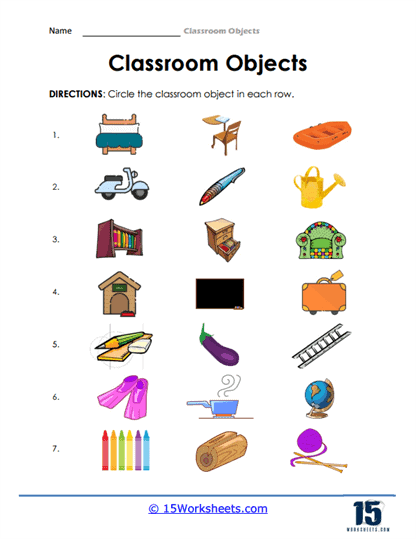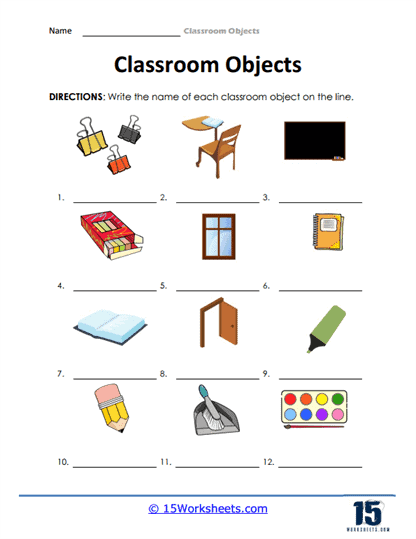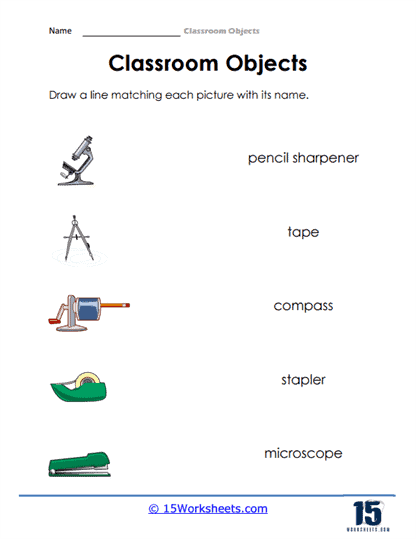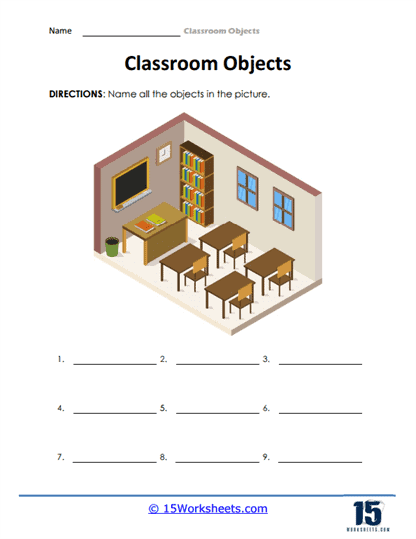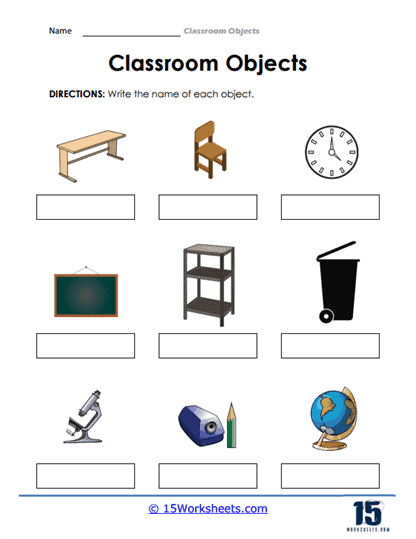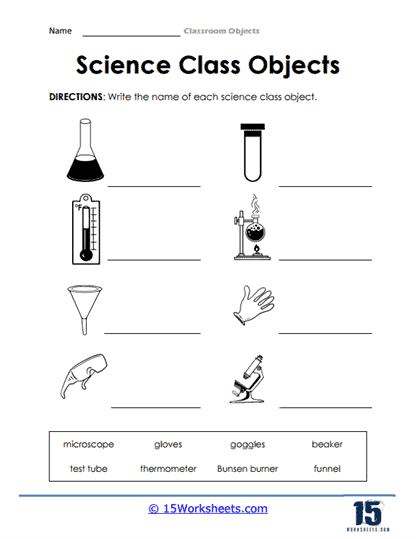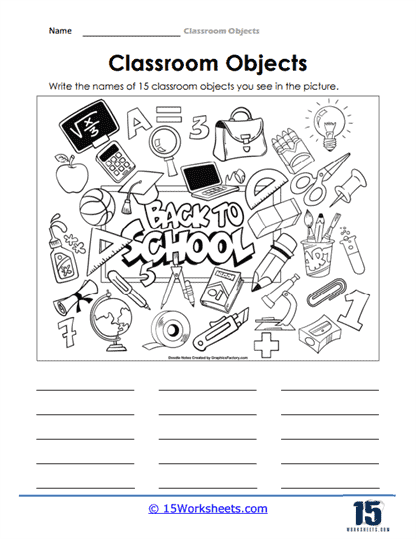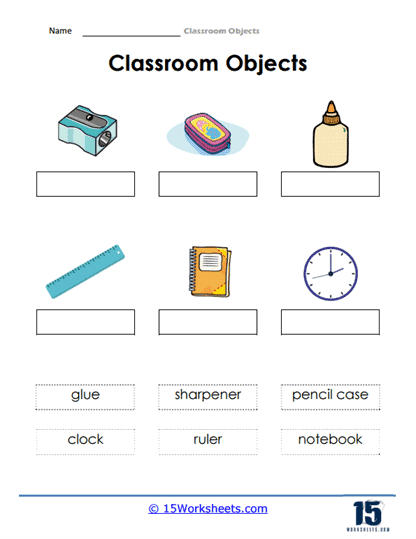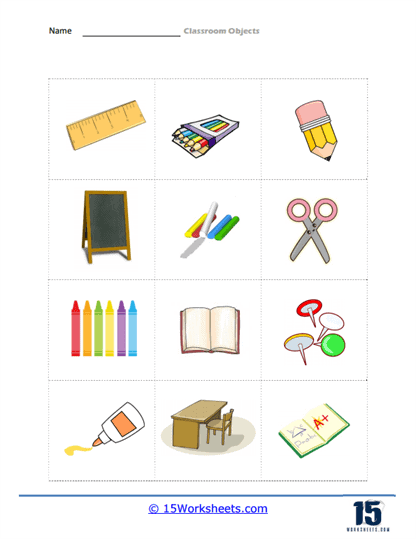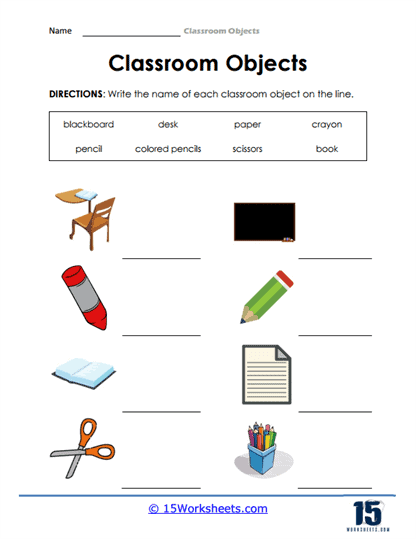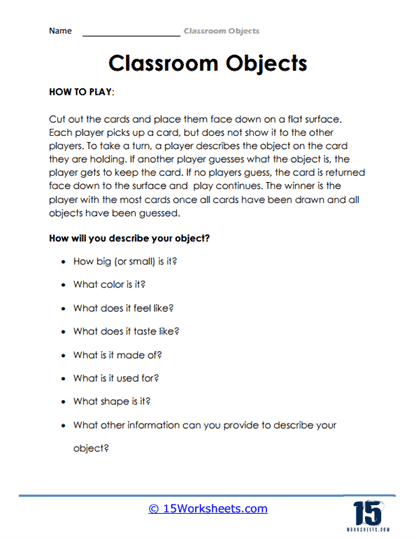Classroom Objects Worksheets
All About These Worksheets
Ignite young learners’ curiosity and expand their vocabulary with this delightful series of Classroom Objects worksheets. Designed to foster a deeper understanding of the objects commonly found in a classroom environment, these worksheets provide interactive and engaging activities that support early literacy skills, visual recognition, and cognitive development.
Through this series of Classroom Objects worksheets, young learners will embark on a journey of discovery within their educational environment. By participating in interactive activities that promote word-object association, reading comprehension, handwriting, and visual recognition skills, students will develop a deeper understanding of the objects that surround them in the classroom. Overall, these worksheets provide an enjoyable and effective way to build vocabulary, strengthen foundational literacy skills, and cultivate a sense of familiarity and comfort within their learning environment.
These worksheets whisk students into a world where rulers, glue sticks, and paper clips take center stage like rock stars of Room 203. In Find and Color, little artists hunt down and color objects like highlighters hunting down the meaning of life (or at least a worksheet header). Object Match, Drawing the Line, and Draw a Line continue the frenzy with matching mayhem, turning classrooms into chaotic dating shows where erasers are desperately trying to find their pencil soulmates.
Meanwhile, the alphabet goes full-on acrobat in worksheets like Missing Letters, Letter Match Class Objects, and the mind-bending Letter Unscramble – where “chalkboard” might emerge as “broadchalk” if you’re not careful. For those students who like their academia with a side of mystery, Word Circles, Class Object Word Find, and School Objects Word Search bring out their inner word detective. Color the Name and Rewrite the Words are there too, in case students forgot what a stapler looks like in blue or how to spell “notebook” without help from Siri.
And if that’s not enough, the hands-on chaos reaches peak fun with Cut and Paste Class Objects, Cut and Glue, and the wildly exciting Classroom Objects Memory Game – where scissors finally earn their keep and glue becomes king. Students will also get to dig through Linda’s School Bag (poor Linda, privacy gone forever), figure out Who In the Row is hogging the markers, and make sense of the Object Explosion – which sounds like what happens when you shake a backpack from May. There’s even What’s My Name? for the shy protractor, Where Is That? for the lost whiteboard marker, and Multiple Names for the class clown of objects – the thing that’s a rubber, an eraser, and “that pink chewy thing” all at once. Whether it’s Science Class Objects for the brainiacs or Large Class Objects for those who need a desk the size of a sofa, these worksheets promise laughs, learning, and a whole lot of sharpened pencil drama.
Including Classroom Objects In Learning
Over the years, traditional teaching methods have undergone a massive transformation to suit the needs of modern-day education. Whether it’s to teach a new concept or strengthen the knowledge of an existing one, the use of tangible objects has proven to be an effective strategy regardless. Not only does the use of classroom objects enhance the curriculum, but it also helps students engage with the teacher and the rest of the students better. Here’s why using them is important for teachers.
Why Teach With Objects?
Since they serve as an additional form of classroom material, teaching with objects can help create a more tactile and direct experience for children. Furthermore, there are a number of ways in which objects can be used to make the learning experience much more real. This way, children also learn to apply their knowledge to other contexts. Here are some more reasons why teaching with objects is necessary for a contemporary classroom.
It Enhances Their Sensory Literacy
Children learn best by utilizing all of their senses in the process. Hence, through this method, they’re able to gather evidence by using touch, sight, taste, hearing, and even smell.
It Makes Them More Responsive
Not every child is accustomed to learning effectively by the written method alone. Some learn better through visual resources. This is where utilizing classroom objects becomes a necessity.
It Arouses Curiosity
Most children are naturally curious. However, being in a stressful environment can sometimes hinder their ability to be curious or let alone participate well. Hence, by using objects from their surroundings, teachers can stir their curiosity and help them develop questions to explore the subject further.
It’s Fun
Outdated teaching methods are hardly fun. Moreover, engaging a student in the classroom requires more than a direct approach. The use of visual as well as audio resources is a great way to make your lessons fun and engaging since learning is all about discovery and exploration.
How To Incorporate Classroom Objects Learning in Class
Play the “Touch” Game
Start by assembling every student in the middle of the classroom and then shout a word out, for example, “touch the window.” Then, every student must run to the window and touch it. Repeat it again with other objects around the classroom and make your lessons fun and exciting.
Play the “Knock Knock” Game
Start by instructing every student to close their eyes, walk to one of the objects in the classroom and knock on it twice. Encourage your students to identify what you have knocked on. Once they’ve expressed their ideas, allow them to open their eyes to check. You can also take it up a notch by assigning points to the team with the correct answers.
Play “Stick the Flashcards”
While this is a much more basic strategy, it is also easy to prepare for and implement in a classroom, especially if there are more students involved and less time at hand.
Provide each student with a stack of flashcards with the names of different objects. Assign them a certain amount of time and encourage them to stick the flashcards on the right objects.


